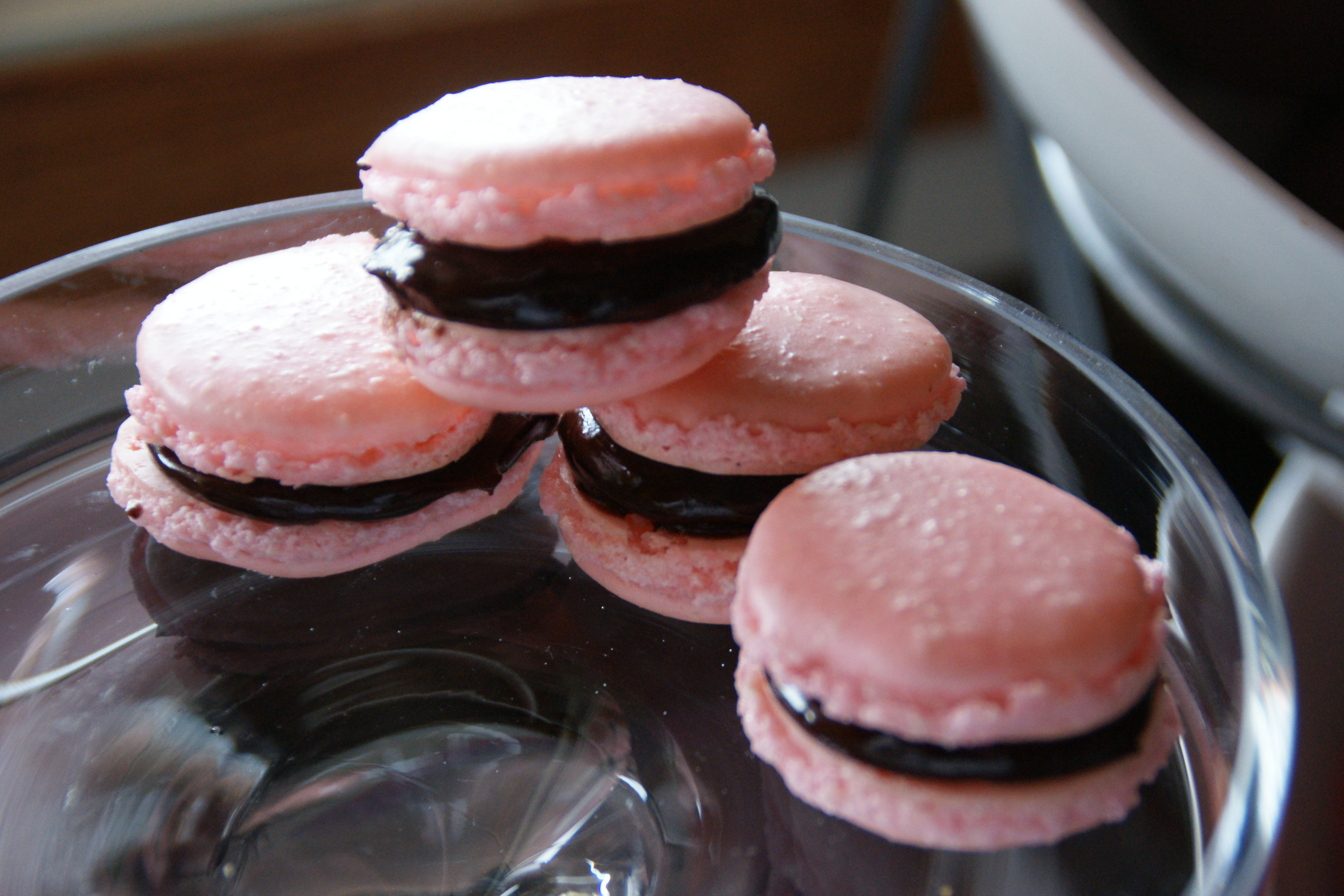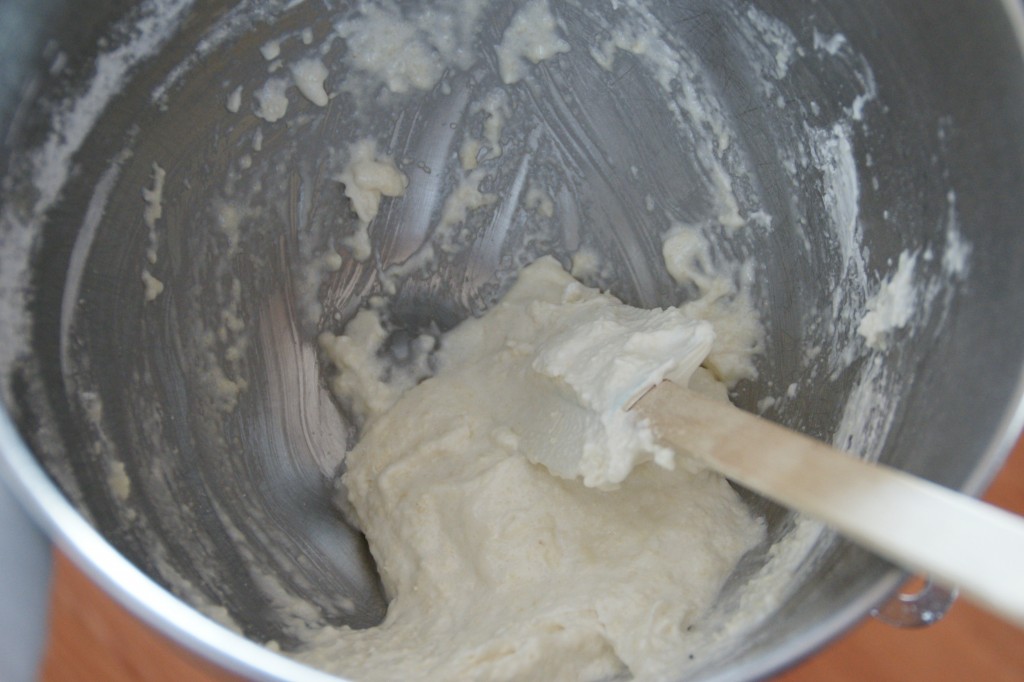My daughter Andria called in a state of confusion and said, “These macaron recipes make them sound like they are so hard. Is that true?”
“Not at all. They are actually really simple.”
“They have all kinds of rules!!! Which ones do I have to follow?”
“Only a few of those rules are really important.” All of those other rules make even a seasoned food scientist question this simple combination of egg whites, sugar and almonds. Here is a recipe that gives perfect results every time. You will also find a run down of some of those rules and which ones made a difference in my experiments.
A rubber spautla is the best tool and this is the correct motion for folding the dry ingredients into the egg whites. Some recipes say to add the beaten egg whites to the dry ingredients so the egg whites a are on top and are not deflated. I gently added the dry ingredients to the side of the egg whites so I would not dirty another bowl and did not see any difference. I also dumped them on top without adverse results, but I don’t really recommend the dump method.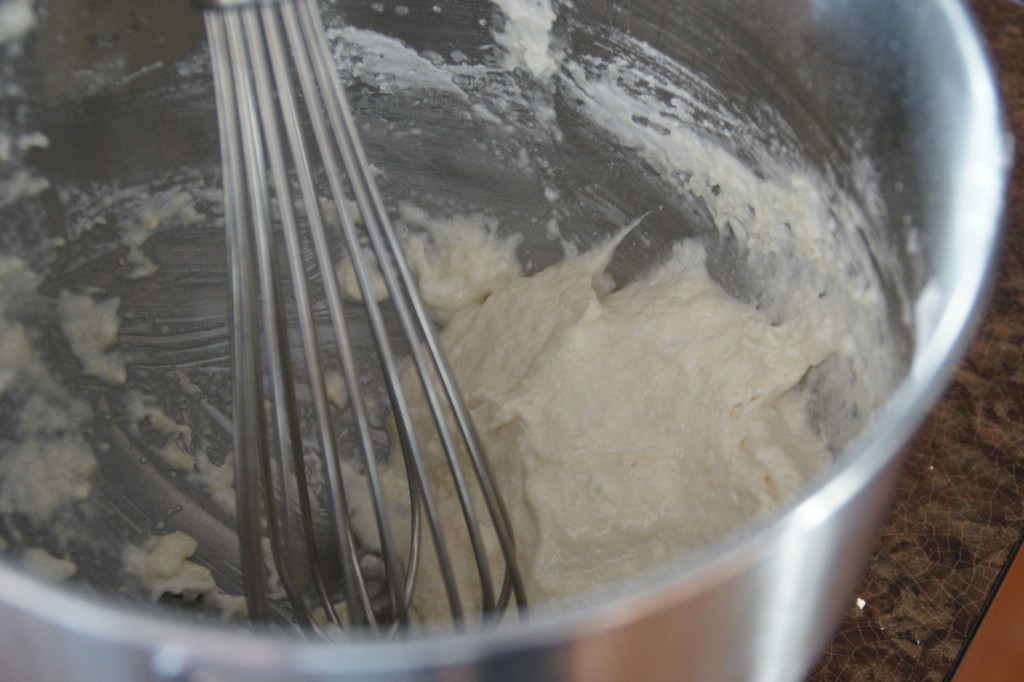
A wire wisk can be used for beating egg whites but it is not the best tool for folding in egg whites. It smashes through the batter, deflating the air that was so carefully beaten into the egg whites.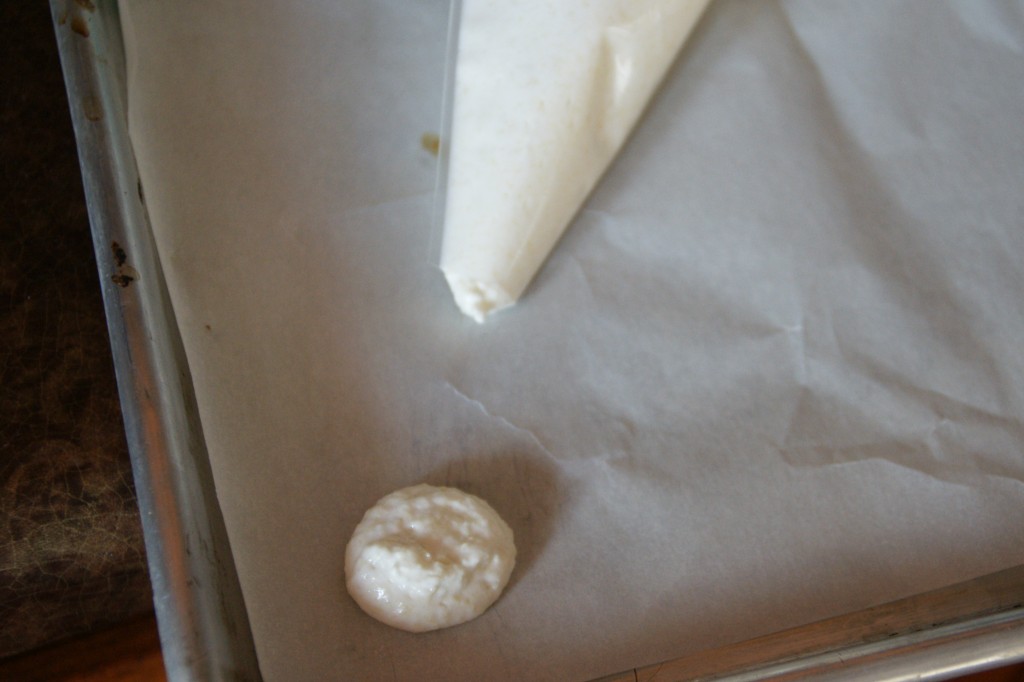
A pastry bag or a baggie with the corner cut off works great for forming macarons.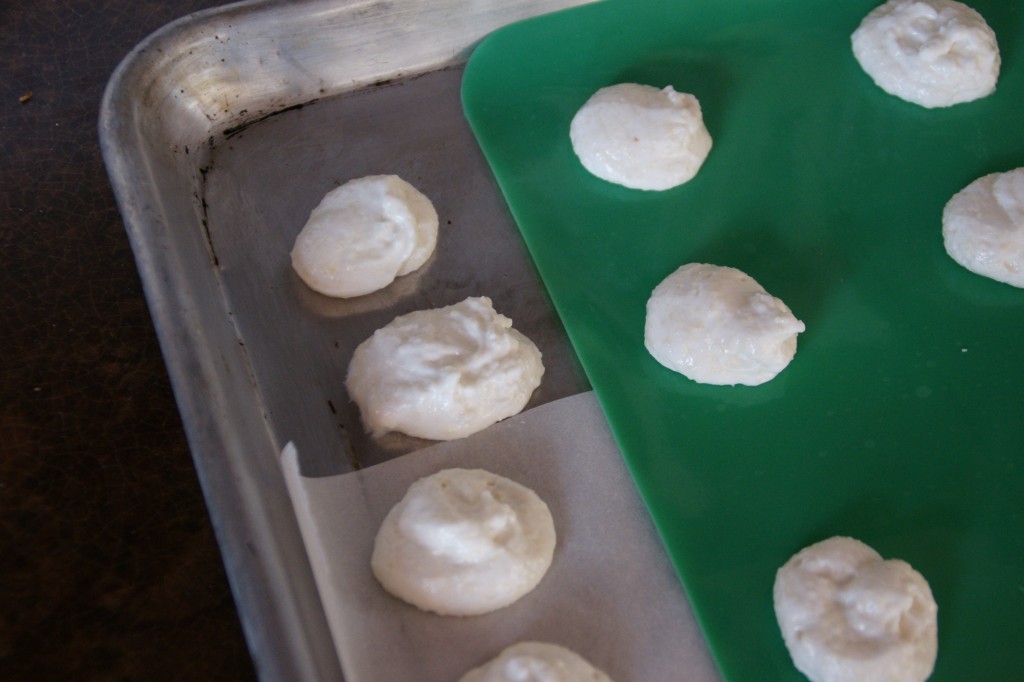
Here is the test comparing parchment paper, plain baking sheet and a silipat mat. I baked them in the oven just like you see in the picture so the cooking time, temperature etc. would not vary. All worked, but I like the parchment paper for easiest removal.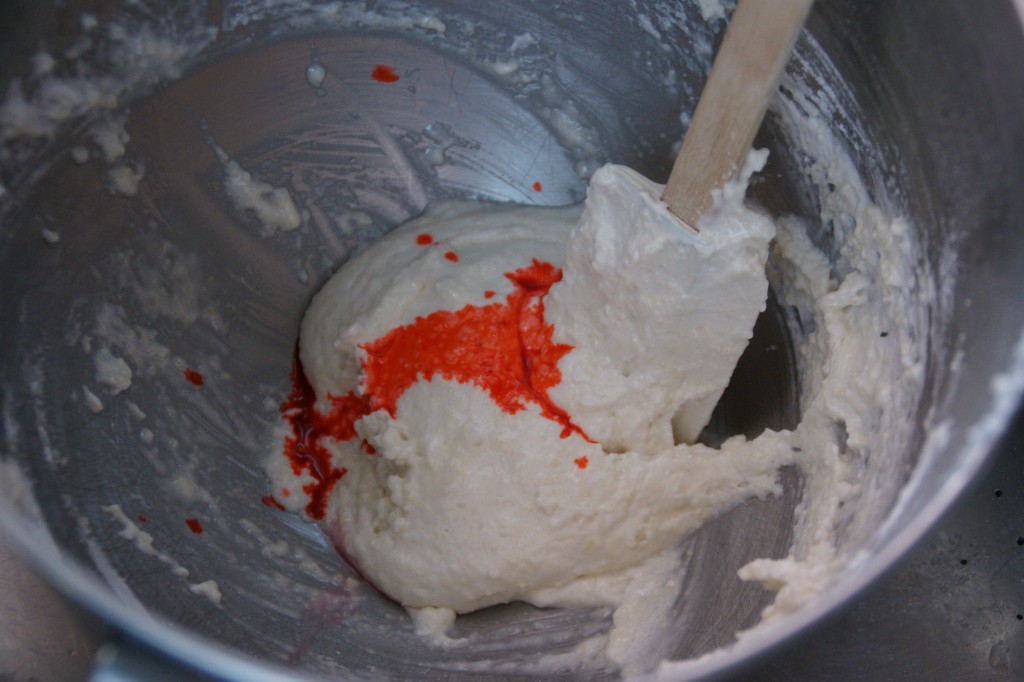
After I piped the white macarons, I added red food coloring to the rest of the batter and gently folded it in.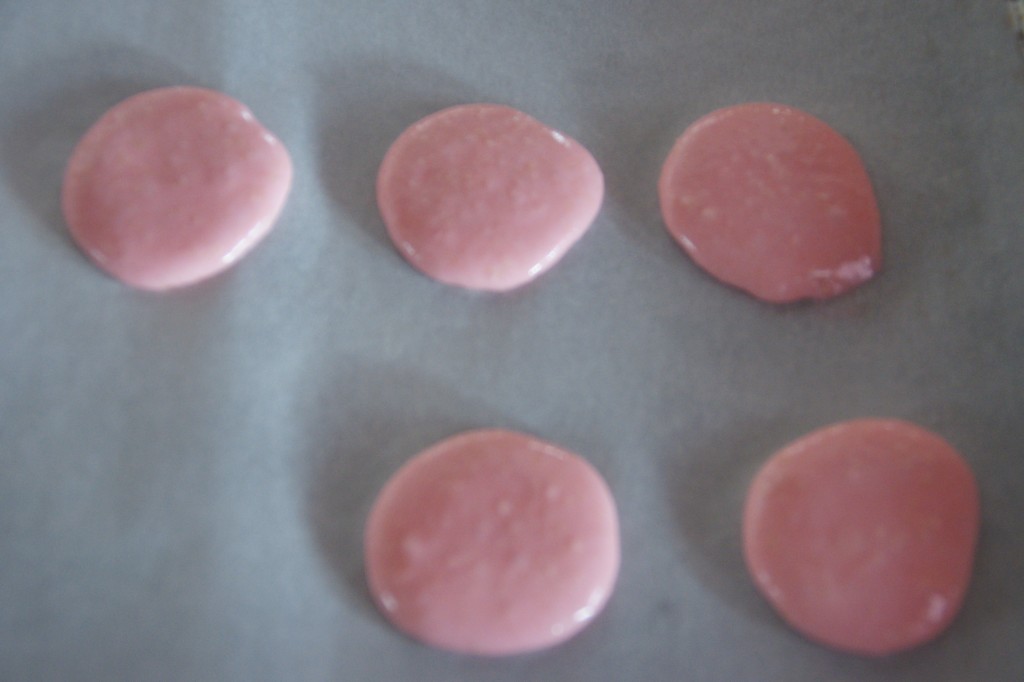
The red macaron batter was the same batter as the white but the red food coloring and extra manipulation made the batter slightly thinner. The thinner batter actually made a more perfect macron. I tried paste food coloring but it was difficult to stir into the batter without deflating the egg whites. I made liquid food coloring out of paste by adding a little of paste to 1 teaspoon of boiling water. 
A look at the bottom of the macarons baked on the different surfaces. Not much difference. Notice the air bubble in the macaron on the left. The air bubbles stayed in the thicker batter even after I tapped the baking sheet on the counter. The viscosity would not allow the air bubble to rise to the surface and dissipate. I did not have a problem with air bubbles in the pink batter which was thinner.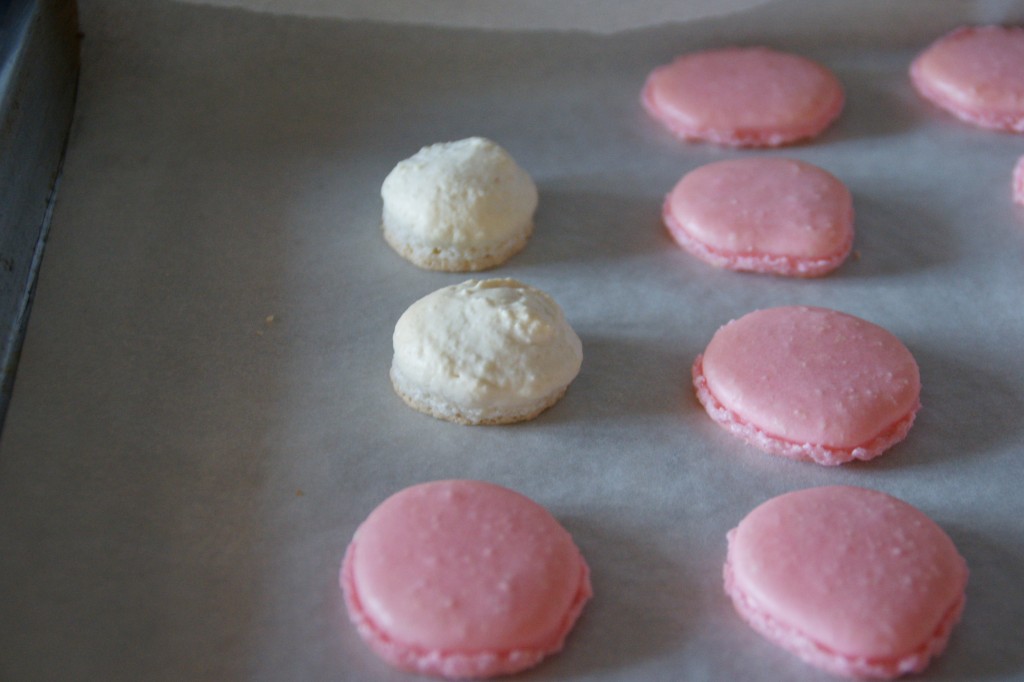
The height of the macarons is noticeably different. The pink macarons had food coloring and increased stirring to make them uniform in color which made the batter thinner and they spread more when pipped.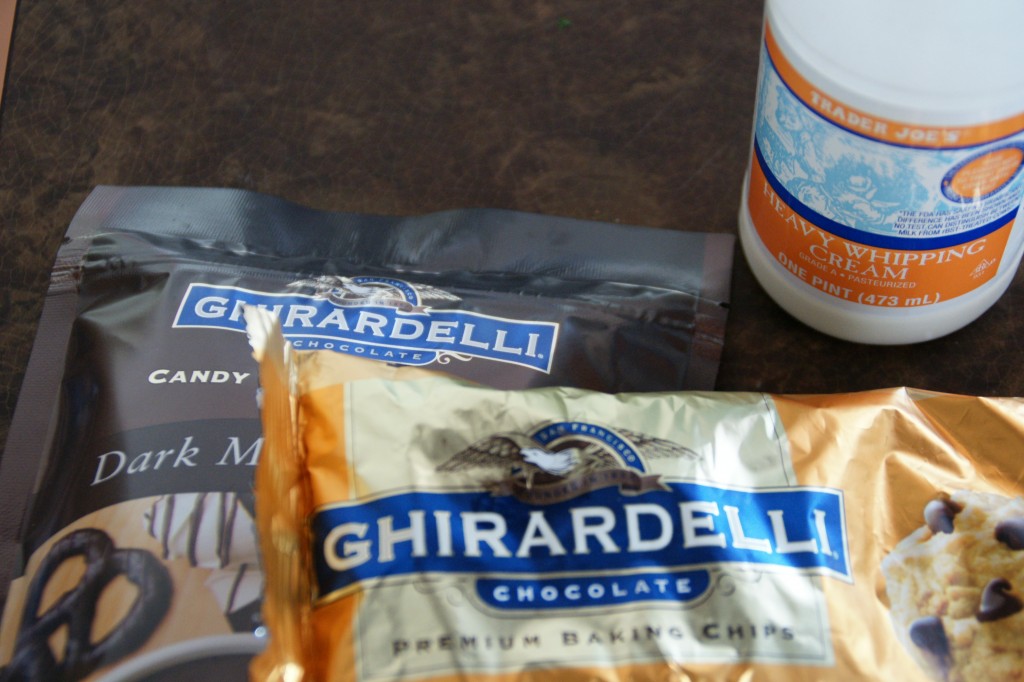 For the Chocolate Ganache, use a yummy tasting chocolate. Sometimes I add a flavoring which can be stirred in at the end.
For the Chocolate Ganache, use a yummy tasting chocolate. Sometimes I add a flavoring which can be stirred in at the end. 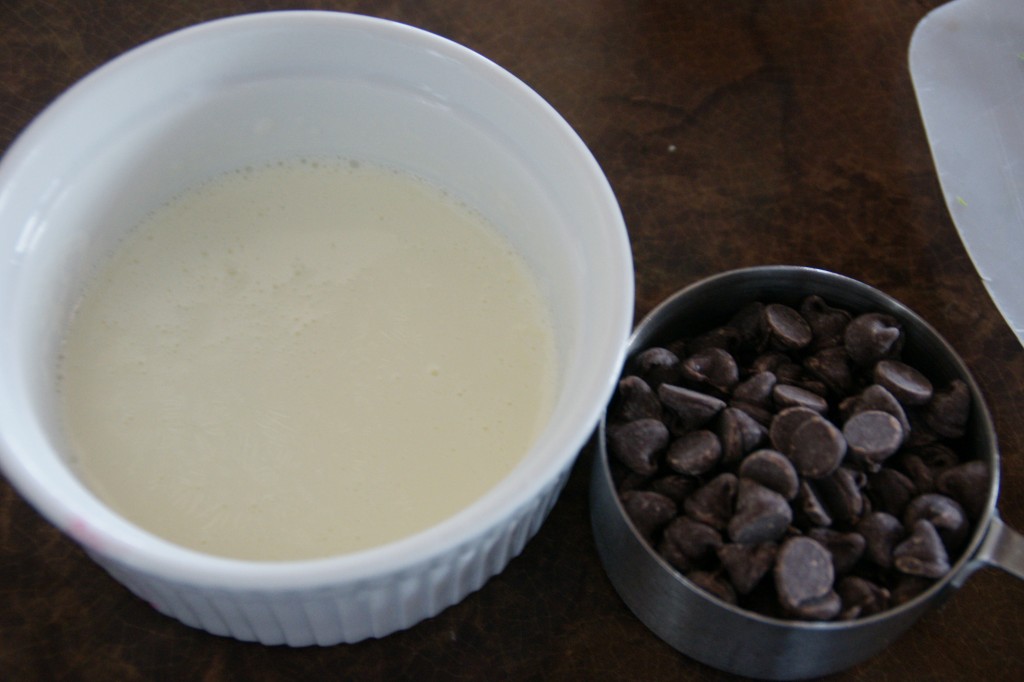
I heat 2 tablespoons of whipping cream in the microwave for 20 seconds or until steaming hot. It will heat faster in a small dish than if you use a big bowl. 2 tablespoons of cream in a big bowl might take twice as long. If using light cream or milk, decrease the amount since they will thin the chocolate more.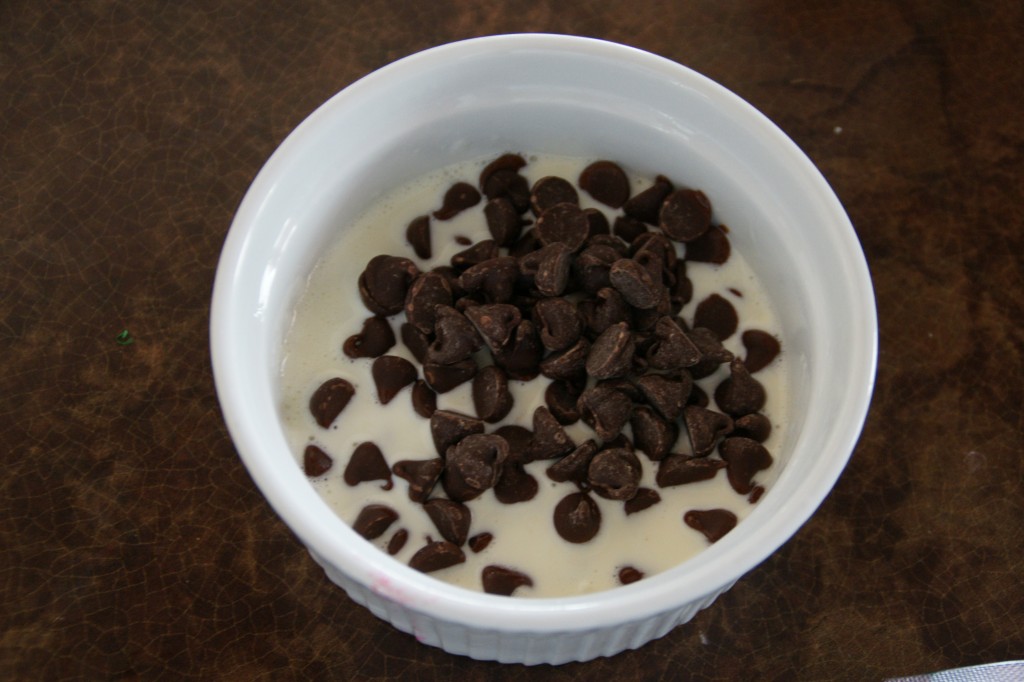
The chocolate pieces are melting from just sitting in the hot cream. Stir until completely melted.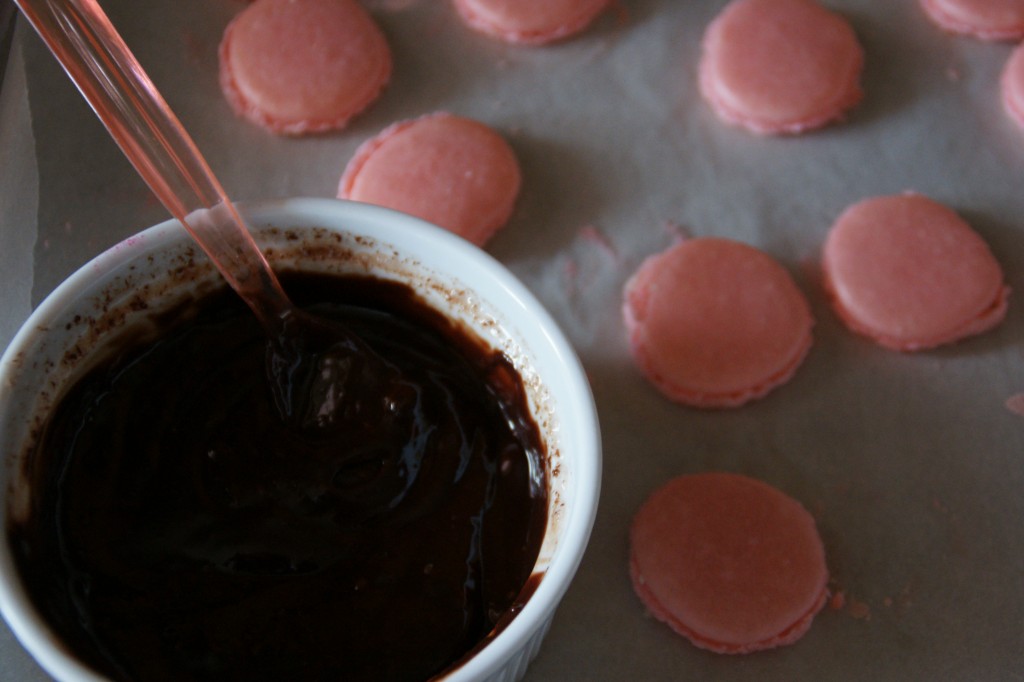
Smooth as silk chocolate ganache.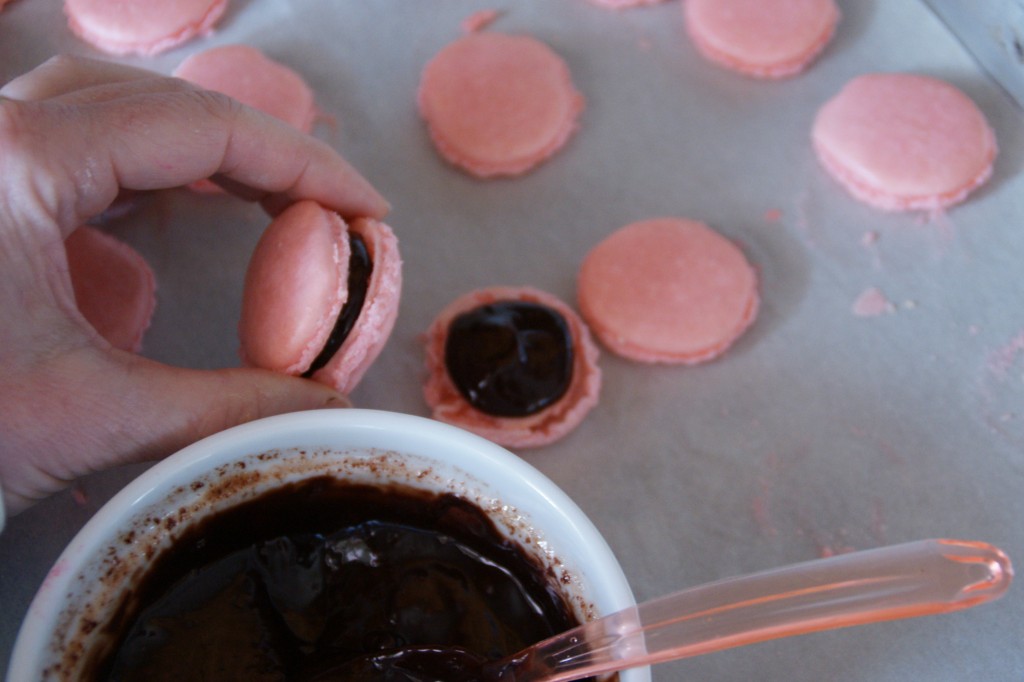
It is quick and easy to spread the ganache on the shells. Other popular fillings are jam, buttercream, salted caramel or flavored frostings.
The food science of macarons:
1. Egg whites do achieve a better volume if they are at room temperature. Warm the egg in your hand or water if you forgot to take them out a few minutes early.
2. “Do I have to weigh the ingredients? ” Andria asked. I don’t and have never had a problem. I do use large eggs and measure accruately. The humidity in the air makes a bigger difference than the precision of the measurements. I always make meringue, macarons or divinity on a dry, sunny day.
3. Egg whites need a mixer with a metal bowl for the best volume. (Andria is an engineer for Whirlpool who makes Kitchenaid Mixers so she will love that one). A bullet, a blender or a food processor won’t work. Also, the oils left behind on plastic bowls prevent the egg white from beating up to full volume. Beating them by hand takes a lot of muscle, having help is essential to share the beating.
4. Andria asked, “Do I have to sift the powdered sugar and almond flour (almond meal).” I knew she didn’t have a sifter so I tested this one and the macarons came out just as well if I sifted, ran the mixture through the food processor to combine or just stirred the sugar and almond flour well with a spoon before folding into the egg whites.
5. “Do I have to use a silipat mat?” I knew she didn’t have one of these in her kitchen either so I tested it. My preference is to use parchment paper. Silipat mats work but the sometimes the macarons did not release as well. The old fashioned method of baking right on a baking sheet works too but the hot baking sheet needs to be placed on a wet dish towel to create steam that allows the macrons to lift off the baking sheet. With this last method, the macarons have to be removed from the baking sheet while still warm but if they are too hot they have a tendency to fall apart.
6. “Do I need to tap the baking sheet against the counter?” It does help burst the air bubbles but the macarons will still taste wonderful. A thinner batter will not have as much of a problem with the air bubbles and you might not even need to tap the pan.
7. “Do I have to let them sit for an hour before baking?” Technically they will form nice little caps if you let them sit but humidity and the thickness of the batter are even more important. Thin batter needs to dry slightly so the hour of resting before baking improves the macarons. A thick, drier batter sets up perfectly and really does quite well when the 1 hour resting time is eliminated.
8. Some recipes say macarons taste better the next day and my experiments showed that they definitely are just as good the next day when filled with chocolate ganache. Some fruit fillings with lots of moisture can change the texture slightly when stored overnight.
Macrons
2 egg whites
1/4 cup sugar
1/2 teaspoon almond extract
1 cup powdered sugar
3/4 cup almond meal (also labeled as almond flour)
Beat egg whites and sugar until stiff peaks, add almond extract and beat for about 10 seconds later. Mix powdered sugar and almond meal together (or sift or mix in food processor to combine well) and gently fold with egg whites until no longer any dry ingredients. Add food coloring if desired.
Pipe onto a cookie sheet lined with parchment paper. Let stand about an hour. Bake at 325 degrees for 10 minutes. Let cool 2 to 3 minutes and remove from pan. Fill with Chocolate Ganache.
Chcolate Ganache
2 tablespoons cream
1/2 cup (4 ozs) good quality chocolate
Heat cream in a small glass cup in Microwave for 20 seconds until steaming hot. Pour over chocolate and stir until smooth. Spread between macarons.
